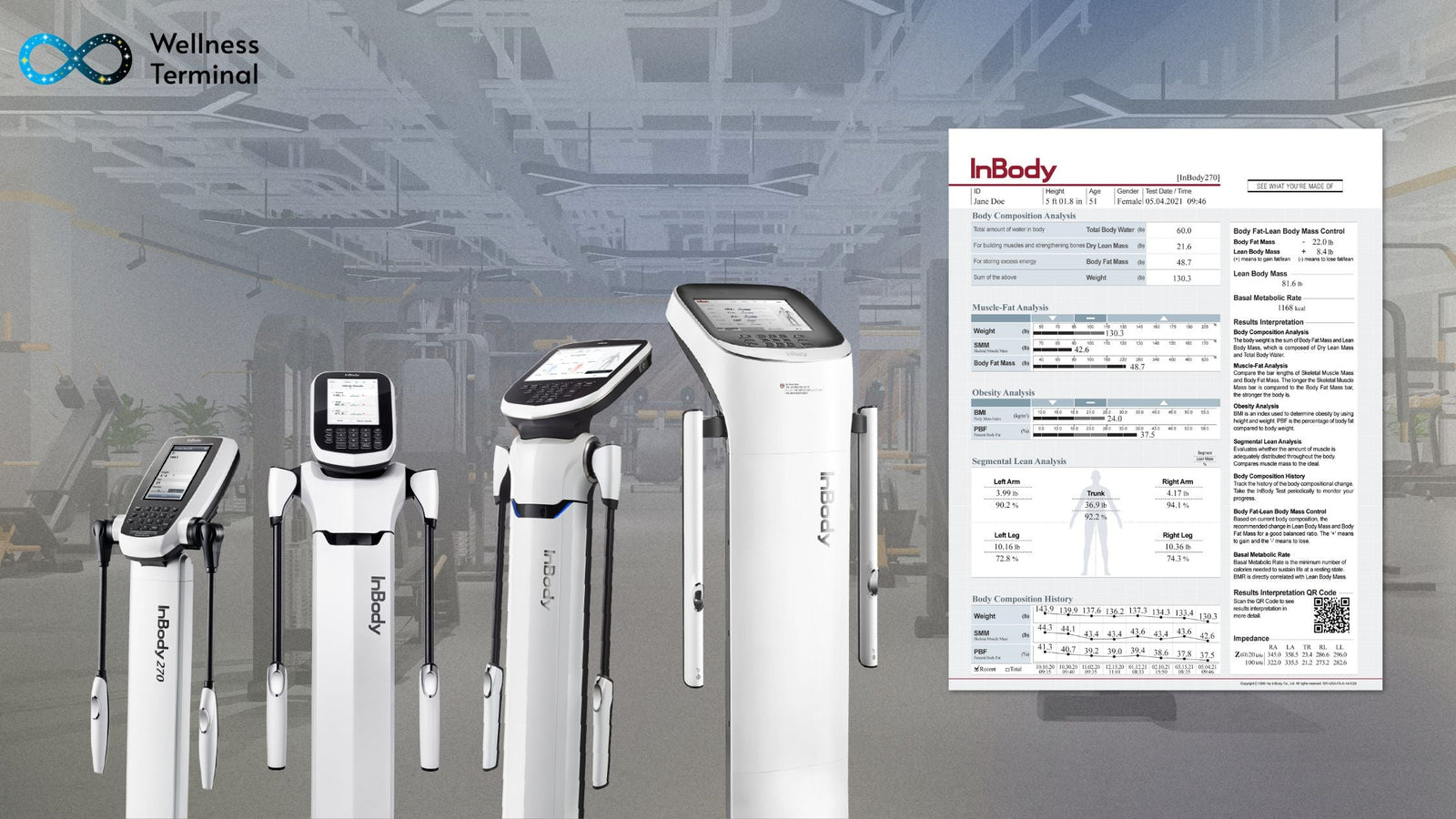In the world of health and wellness, understanding your body beyond weight is vital. Enter the InBody Test, a cutting-edge body composition analysis that provides a comprehensive snapshot of your internal health metrics. Unlike traditional methods of assessing health through weight or BMI alone, the InBody Test offers highly detailed insights into your body’s muscle mass, fat levels, water distribution, and more. Whether you’re an athlete, a fitness enthusiast, or simply someone looking to take control of your health.
What is the InBody Test?
The InBody Test is a non-invasive body composition analysis that utilizes advanced bioelectrical impedance analysis (BIA) technology. This method sends a mild electrical current through the body to measure resistance and reactance in different tissues. The results are then used to calculate various components of your body composition, including:
-
Total Body Water (TBW): The total amount of water in your body, which is critical for cellular function and overall health.
-
Skeletal Muscle Mass (SMM): The weight of the muscles attached to your skeleton, which are vital for movement and metabolism.
-
Body Fat Mass (BFM): The total weight of fat in your body.
-
Visceral Fat Level: The fat surrounding your internal organs, which is associated with health risks like heart disease and diabetes.
The test takes less than a minute to complete and provides a detailed result sheet that breaks down your body composition into easy-to-understand segments.
Key Features of the InBody Test
The InBody Test stands out for its speed, precision, and clarity. In under 60 seconds, it delivers a detailed analysis of your body composition using advanced bioelectrical impedance technology—without relying on assumptions or averages. Whether you’re tracking fitness progress, managing health conditions, or optimizing performance, the InBody Test provides science-backed data to support informed decisions.
1. Non-Invasive and Quick
The test is painless and takes only less than 60 seconds. Simply stand on the device and hold the handles as it scans your body.
2. No Estimations or Averages
Unlike other body composition tests that rely on statistical averages, the InBody Test uses direct measurements to provide accurate results tailored to your body.
3. Segmental Analysis
The test provides a breakdown of muscle and fat distribution across different body segments, helping identify imbalances or areas requiring attention.
4. Hydration Analysis
By measuring the extracellular water (ECW) and total body water (TBW) ratio, the test evaluates your hydration status, which is crucial for optimal health.
How to Read Your InBody Scan Results
Understanding the InBody result sheet is key to unlocking actionable insights about your health. Here’s a breakdown of the main sections:
1. Body Composition Analysis

This section divides your total body weight into four main components:
-
Total Body Water (TBW): The sum of intracellular and extracellular water. Maintaining a proper balance is crucial for overall health.
-
Protein: Indicates the amount of protein in your body, essential for muscle development and repair.
-
Minerals: Reflects the mineral content in your body, which contributes to bone strength and metabolic functions.
-
Body Fat Mass (BFM): Shows the total mass of fat in your body.
2. Muscle-Fat Analysis
This section features bar graphs comparing your total weight, skeletal muscle mass, and body fat mass. It helps you visualize whether your muscle-to-fat ratio is balanced or requires improvement. For instance:
-
A higher skeletal muscle mass relative to body fat indicates better muscle development and a healthier body composition.
-
Imbalances in this ratio may suggest a need for targeted fitness or nutritional strategies.
3. Obesity Analysis
This section includes:
-
Body Mass Index (BMI): A general indicator of weight relative to height. While useful, it doesn’t differentiate between muscle and fat.
-
Percent Body Fat (PBF): A more specific measure, indicating the percentage of your total weight that comes from fat.
4. Segmental Lean Analysis
 This part assesses lean mass distribution across five body segments:
This part assesses lean mass distribution across five body segments:
-
Right Arm
-
Left Arm
-
Trunk
-
Right Leg
-
Left Leg
By identifying areas of muscular imbalance, this analysis helps design targeted training or rehabilitation programs.
5. ECW/TBW Ratio
This ratio measures the balance between extracellular water (ECW) and total body water (TBW). A healthy ratio typically falls between 0.360 and 0.390. Deviations may indicate:
-
Dehydration
-
Fluid retention
-
Potential health issues like inflammation or lymphedema
6. Visceral Fat Level
Visceral fat surrounds your internal organs and is a key indicator of metabolic health. The InBody Test assigns a level to your visceral fat, with a recommended threshold of 10. Higher levels may increase the risk of conditions like heart disease, diabetes, and certain cancers.
Tips for Interpreting and Utilizing Your InBody Results
1. Monitor Progress Over Time
Regularly tracking your results allows you to monitor changes in your body composition, helping you assess the effectiveness of your fitness or dietary plans.
2. Focus on Muscle Development
Higher skeletal muscle mass is beneficial for metabolism and overall strength. If your muscle mass is low, consider incorporating resistance training into your routine.
3. Address Fat Distribution
High percent body fat or visceral fat levels may indicate a need for dietary adjustments or increased physical activity to reduce health risks.
4. Ensure Proper Hydration
Maintaining a healthy ECW/TBW ratio is crucial for physiological balance. Drink adequate water and manage salt intake to maintain hydration.
5. Identify Imbalances
Segmental Lean Analysis can pinpoint areas requiring targeted exercises to correct muscular imbalances or weaknesses.
Applications of the InBody Test
The InBody Test is not just for fitness enthusiasts, research purposes. It’s widely used in various fields:
-
Sports Performance: Athletes use it to optimize training and recovery.
-
Clinical Settings: Healthcare providers use it to monitor patients’ nutritional and metabolic health.
-
Weight Management: Dietitians and trainers rely on it to track fat loss and muscle gain.
-
Rehabilitation: Therapists use it to design programs for recovering patients.
Conclusion
The InBody Test is a revolutionary tool for understanding your body’s composition in depth. By analyzing metrics like skeletal muscle mass, body fat, hydration levels, and fat distribution, it provides a comprehensive picture of your health. Armed with this knowledge, you can make informed decisions about your fitness, nutrition, and overall well-being.
Reading and interpreting your InBody Scan results might seem complex at first, but with regular use, it becomes an invaluable tool for monitoring progress and achieving your health goals. Whether you’re striving for better performance, weight loss, or simply maintaining good health, the InBody Test offers actionable insights to guide your journey.
If you haven’t tried the InBody Test yet, now is the time to take that first step toward understanding your body better. Visit your nearest InBody testing center and embark on a health journey tailored just for you!

